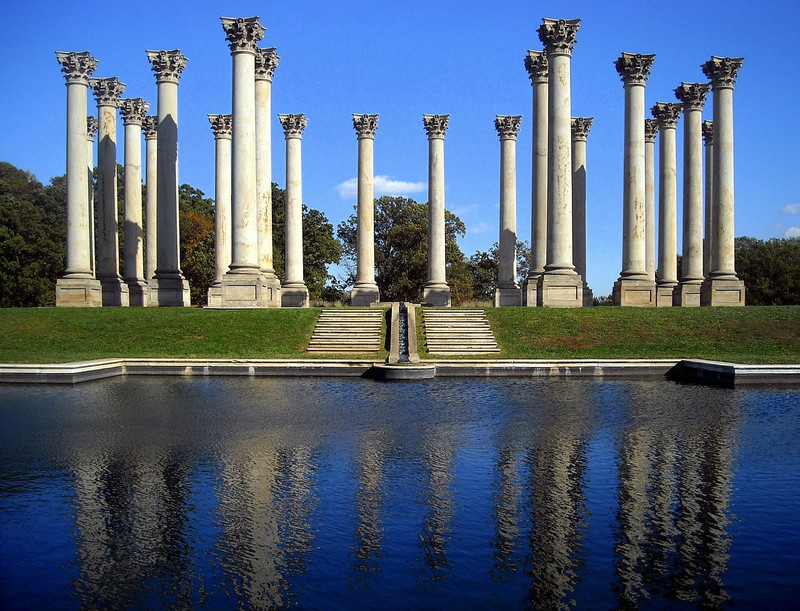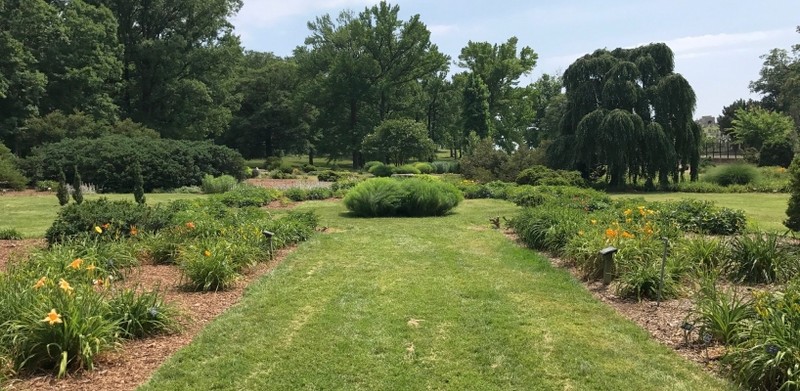United States National Arboretum
Introduction
Text-to-speech Audio
Images
The iconic columns of the Arboretum, by AgnosticPreachersKid on Wikimedia Commons (CC BY-SA 3.0)

Perennial Collection at National Arboretum, courtesy of its website (public domain)

Backstory and Context
Text-to-speech Audio
By the beginning of the 1900s, casual discussion of constructing a national arboretum in the United States had been undertaken, as arboretums had existed worldwide dating back to the 1600s. It was not until 1901, however, that a commission was put together in order to inquire about the possibility of constructing one in the United States. Although a great deal of inquiry was put into the idea, and though it was eventually put before Congress, the actual execution was delayed indefinitely, both due to resistance of the government, as well as the advent of World War I. However, a group called the American Association of Nurserymen worked to set the idea in motion in the 1920s, and by 1924, they had gained enough support to propose a bill. After several re-issuings of the bill, it was finally passed by Congress and brought into law on March 4th, 1927.
By 1929, 190 acres had been acquired for construction of the arboretum, which was enough for work to begin. Though work began slowly on the arboretum, it quickly came to a standstill in 1931 due to both topographical issues, as well as a great cut in funding brought about by the Great Depression. While this seemed as though the construction of the arboretum would be crippled, the committee was given financial aid from several outside sources over the next decade, and by 1946, the arboretum had reached the pinnacle of its collection.
In 1958, the Capitol's sandstone columns in the east portico, dating to 1828, were replaced with marble columns. This same renovation led to the discarding of Capitol Stones in Rock Creek Park. The columns remained in storage until 1984. The Department of Agriculture and private donors facilitated displaying the columns at the National Arboretum, where they have stood ever since.
Today, the Arboretum sports numerous plants and exhibits for both research and education of visitors, as well as a Herbarium, and it continues to put forth publications that stem from the Arboretum’s research.
Sources
Goodrum, Charles A. The History and Development of the National Arboretum. Washington: [The Arboretum?], 1950. HathiTrust Digital Library. Accessed June 5, 2020. http://babel.hathitrust.org/cgi/pt?id=coo.31924090165576;view=1up;seq=3
LeakC. National Capitol Columns, Atlas Obscura. Accessed June 5th 2020. https://www.atlasobscura.com/places/national-capitol-columns.
https://en.wikipedia.org/wiki/United_States_National_Arboretum#/media/File:National_Capitol_Columns_-_Washington,_D.C..jpg
https://www.usna.usda.gov/discover/gardens-collections/perennial-collection/
